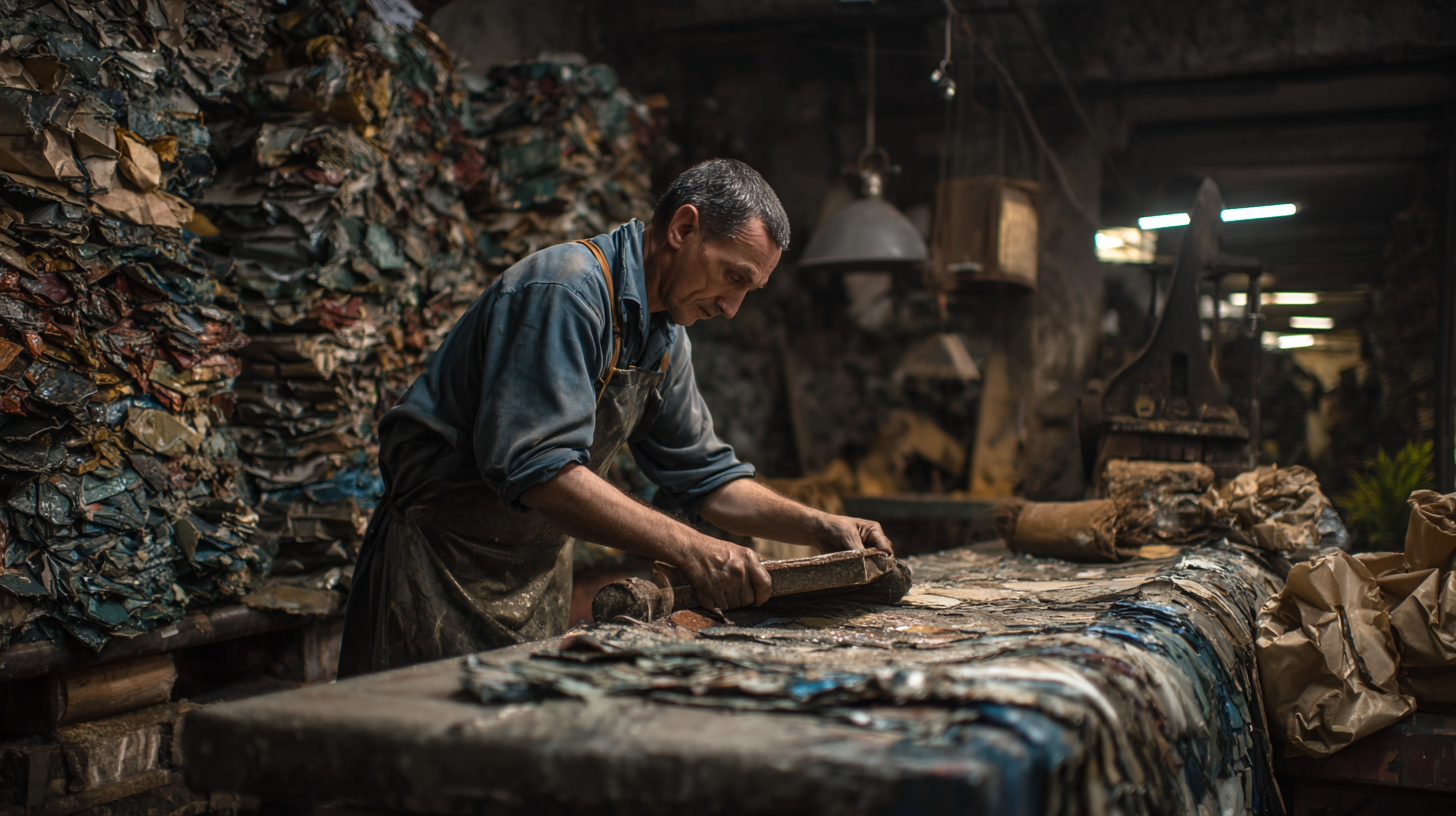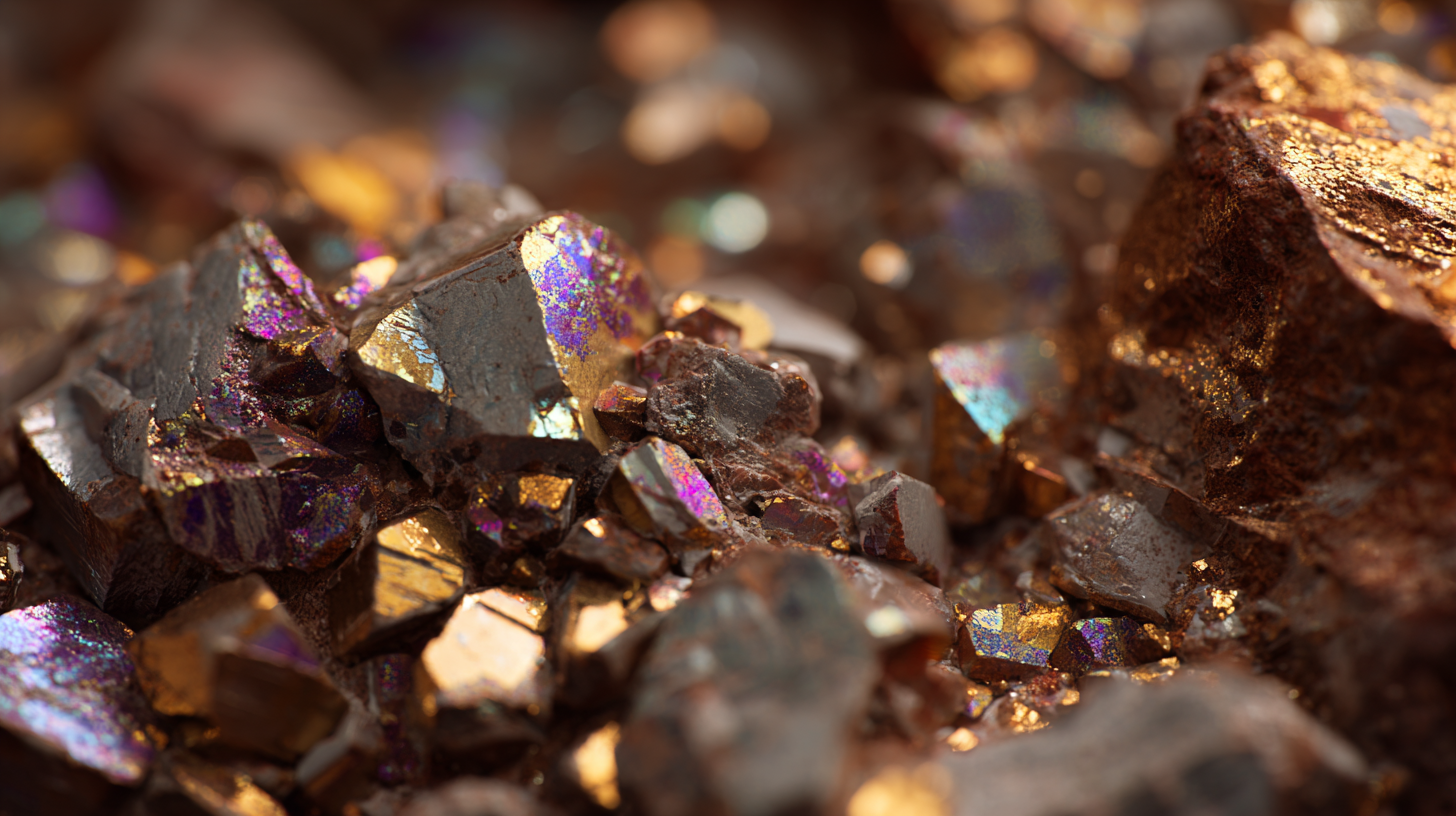QR Code
About Us
Products
Contact Us

Phone

Fax
0086-574-87527773

E-mail

Address
No 432 Zhenhai Middle Road, Luotuo Street, Zhenhai District, Ningbo City, Zhejiang China
The Mica Industry has become a pivotal sector in global trade, with its market projected to reach USD 1.4 billion by 2025, driven by increasing demand in cosmetics, electronics, and automotive industries. As buyers navigate the complexities of sourcing mica, understanding import and export certifications is essential for compliance and success in this competitive landscape. Recent reports indicate that India and Madagascar dominate mica production, accounting for over 70% of the global supply; therefore, global buyers must familiarize themselves with regional regulations and ethical sourcing practices to ensure sustainable partnerships. This blog will delve into effective strategies that can empower buyers to master the operational intricacies of the mica market, focusing on certifications and best practices that foster transparency and responsibility in sourcing.

Mica, a versatile mineral used across various industries, comes in several types, each serving distinct purposes in global markets. The most common varieties include muscovite and phlogopite, which differ in composition and properties.
Muscovite, known for its excellent insulating and reflective qualities, is widely used in electronics, cosmetics, and coatings. In contrast, phlogopite boasts higher thermal stability, making it ideal for applications in high-temperature environments, such as in automotive and aerospace industries.
Understanding the specific properties and applications of different mica types is crucial for buyers looking to optimize their sourcing strategies. For instance, in the beauty industry, refined mica is favored for its ability to enhance the shimmer and texture of cosmetic products, while industrial sectors may prioritize its durability and insulation capabilities. As demand for sustainable and eco-friendly materials rises, innovation in mica extraction and processing will also shape market dynamics, urging global buyers to stay informed about trends and best practices in the mica industry.
In today's competitive landscape, mastering the sourcing of mica requires global buyers to adopt strategic approaches that emphasize responsible purchasing. As industries worldwide increasingly focus on sustainable sourcing practices, it is crucial for buyers to prioritize suppliers who adhere to ethical standards. This not only helps in mitigating risks associated with supply chain disruptions but also aligns with consumer demand for transparency and sustainability.
One effective strategy for global buyers is to leverage advanced technologies such as data analytics and AI to streamline the procurement process. These tools can aid in identifying reliable suppliers, assessing compliance with environmental and social standards, and optimizing supply chain efficiency. Furthermore, engaging with diverse suppliers—including SMEs and innovative startups—can foster a collaborative environment where buyers can tap into unique mica sourcing opportunities while supporting responsible practices. By staying ahead of trends and utilizing the right technological solutions, global buyers can enhance their mica sourcing strategies and contribute to a more sustainable industry.
The mica industry, while thriving due to its extensive applications in cosmetics, electronics, and automotive industries, faces significant scrutiny over environmental and ethical issues. The mining process often disrupts local ecosystems, leading to deforestation, loss of biodiversity, and soil erosion. Additionally, many mica-producing regions witness unregulated mining practices that exacerbate environmental harm. Buyers must prioritize sourcing mica from operations that adopt sustainable practices, ensuring that their procurement does not contribute to ecological degradation.
Moreover, ethical considerations in the mica industry are paramount, particularly concerning child labor and unsafe working conditions. In many countries where mica is sourced, children are employed in hazardous jobs that jeopardize their health and future. Global buyers have a role to play in advocating for fair labor practices by partnering with suppliers who are committed to transparency and ethical sourcing. By requiring third-party audits and certifications, as well as investing in community development, brands can help foster a supply chain that not only meets market demands but also uplifts the communities involved in mica production.
| Dimension | Strategy | Environmental Impact | Ethical Consideration |
|---|---|---|---|
| Supply Chain Transparency | Implement traceability systems | Reduces illegal mining | Enhances fair labor practices |
| Sustainable Sourcing | Partner with certified mines | Minimizes environmental degradation | Supports local communities |
| Community Engagement | Invest in local education and health | Improves community well-being | Enhances corporate social responsibility |
| Regulatory Compliance | Adhere to international guidelines | Promotes sustainable practices | Ensures ethical sourcing |
| Innovation in Alternatives | Develop synthetic mica substitutes | Reduces resource depletion | Mitigates child labor risks |
Mica, a versatile mineral renowned for its unique properties, has found innovative applications across various industries, significantly enhancing product performance and aesthetics. In the cosmetics sector, for instance, mica is celebrated for its shimmering and reflective qualities, making it a key ingredient in makeup products such as eyeshadows, highlighters, and foundations. Its ability to provide a natural glow while being lightweight ensures that cosmetics not only look appealing but also feel comfortable on the skin, catering to the increasing demand for high-quality beauty products.
In the construction and automotive industries, mica plays a crucial role as a functional filler and a heat-insulating material. Its exceptional thermal stability and resistance to electrical currents make it an ideal addition to products such as insulation boards and automotive paints. Additionally, mica's natural resilience against weathering contributes to the durability of construction materials, making buildings safer and more energy-efficient. As global buyers look to enhance their products, understanding these innovative uses of mica can unlock new opportunities for collaboration and improvement in diverse markets.

Negotiating effectively for mica purchases demands a nuanced understanding of strategic sourcing, a practice that has shown significant cost reduction benefits across various industries. By prioritizing supplier management and enhancing negotiation tactics, global buyers can tap into substantial savings. Recent studies highlight that strategic sourcing not only reduces procurement costs but also improves the overall relationship with suppliers, leading to better terms and less vulnerability to market fluctuations.
To maximize cost-effectiveness, buyers should integrate advanced spend analysis into their sourcing processes. This approach provides insights into spending patterns and helps identify opportunities for savings, enabling businesses to make informed decisions. By analyzing purchasing data, buyers can uncover potential efficiencies in their supply chain and refine their negotiation strategies accordingly. Employing these tactics can transform how companies approach their mica procurement, ensuring they achieve optimal pricing and service from suppliers while mitigating risks associated with sourcing.



0086-574-87527773


No 432 Zhenhai Middle Road, Luotuo Street, Zhenhai District, Ningbo City, Zhejiang China
Copyright © 2015-2024 Ningbo Nafty Sealing Materials Co., Ltd. All Rights Reserved.
| | | XML | Privacy Policy |
TradeManager
Skype
VKontakte
